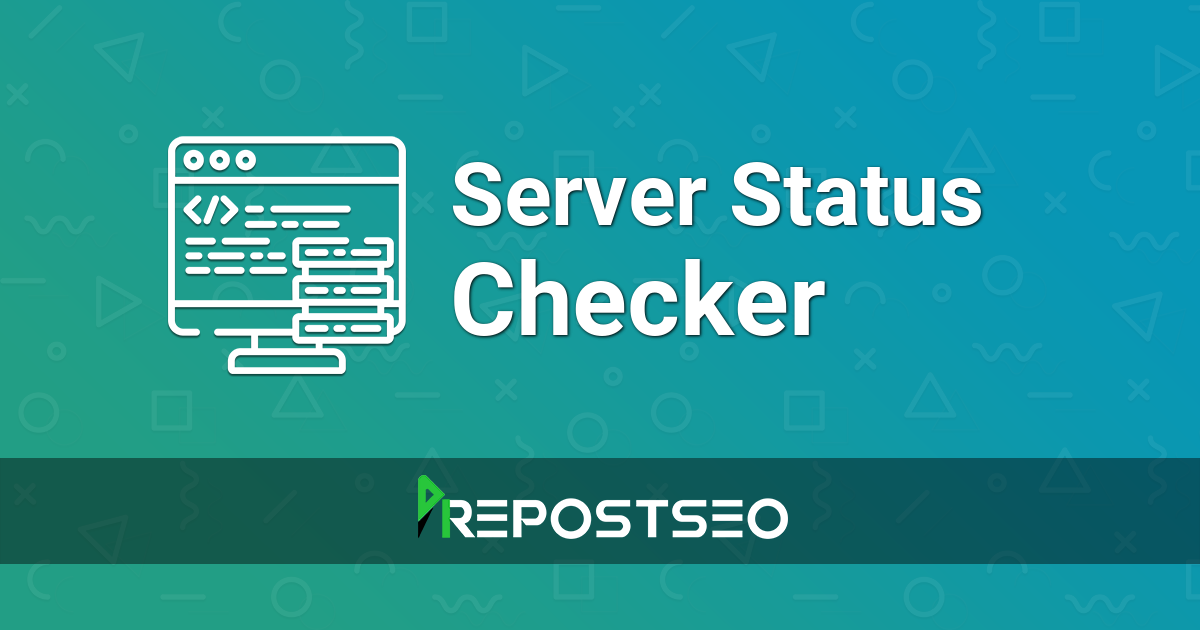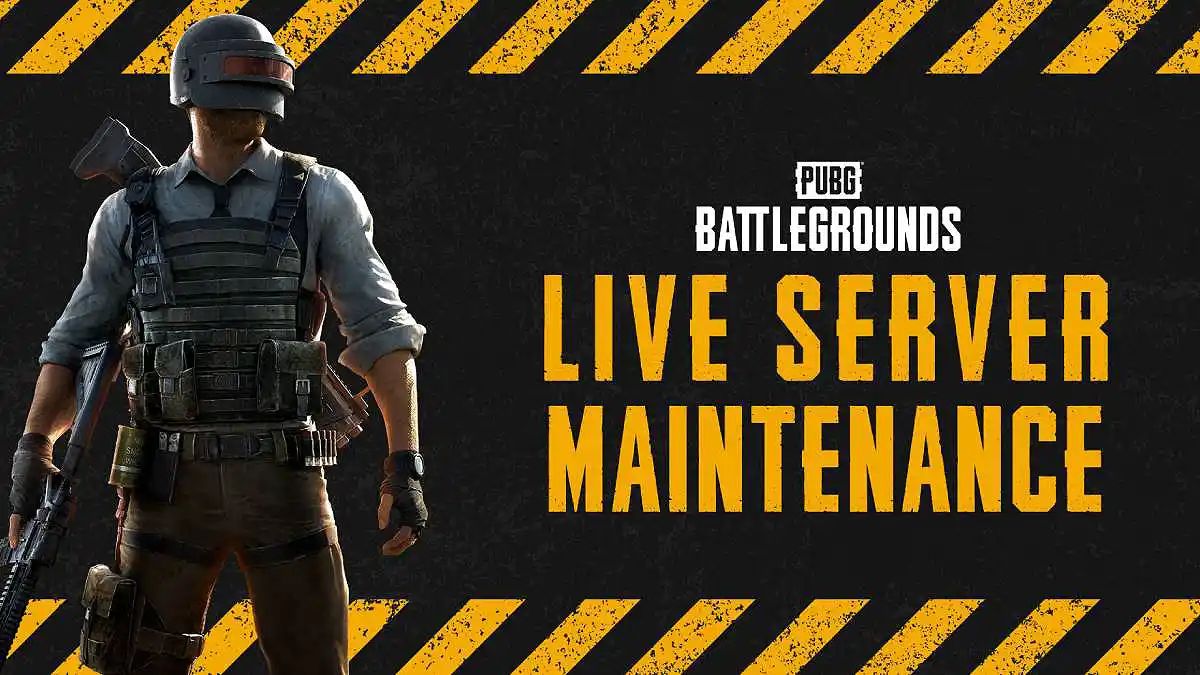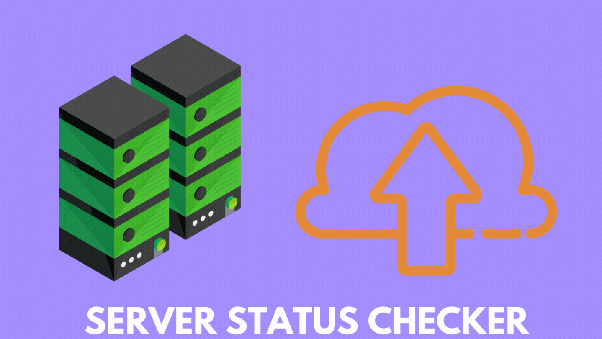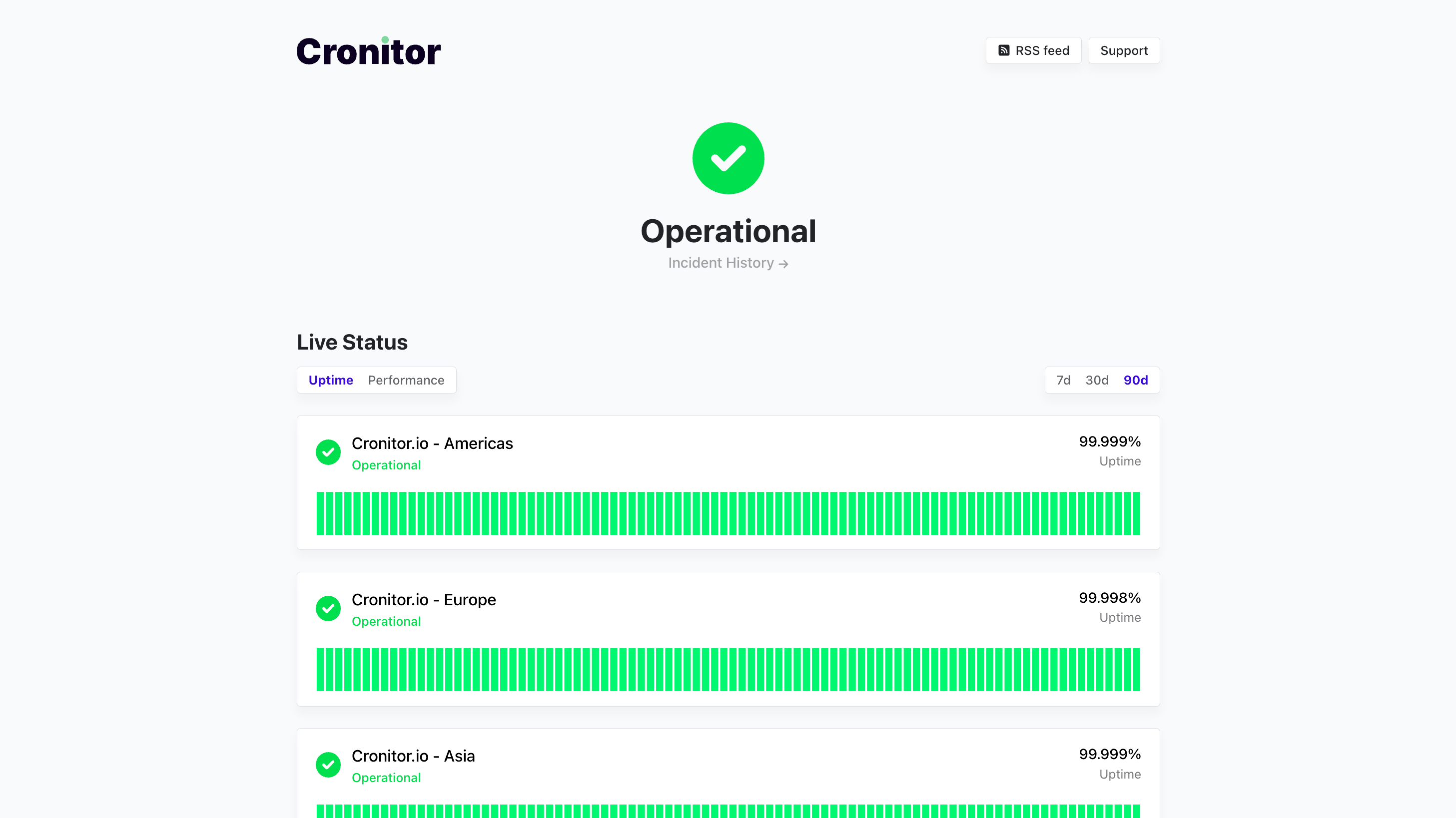Server Status Checkers – Ensuring Your Website’s Uptime and Reliability
In today’s digital landscape, maintaining a stable and reliable website isn’t just an option — it’s a necessity. Whether you manage a small blog or a large enterprise platform, Downtime can lead to lost revenue, damaged reputation, and frustrated visitors. This is where the importance of a server status checker becomes crystal clear. These tools enable website owners and IT professionals to continuously monitor their servers’ health, quickly identify issues, and ensure optimal performance.
A server status checker is an essential component of any successful IT infrastructure. It helps determine whether your servers are operational, if they are experiencing downtime, or if there are potential problems brewing behind the scenes. From simple manual checks to sophisticated online server status tools, the right monitoring solution can provide real-time insights, alerting you to issues before your visitors even notice them. In this comprehensive guide, we will explore the ins and outs of server monitoring, the key features of effective tools, how to check if a server is down, and strategies for maintaining high server uptime. The goal? To empower you with knowledge that keeps your website alive, accessible, and performing at its best.
https://24htrending.com/status/global-status.php
Check Your Server Status Instantly | Is Your Server Down? Find Out Now!
Quickly monitor your server uptime and detect downtime with our free, easy-to-use server status checker. Click now to ensure your website is always online!
Understanding Server Status Checkers and Uptime Monitors
Definition and Purpose

Server status checkers and uptime monitors are software tools designed to automatically monitor server health and availability. Their primary objective is to ensure that your website, application, or server infrastructure stays operational and accessible. These tools regularly ping your server to verify its responsiveness or perform HTTP requests to detect whether the web services are running smoothly.
The core functionality of a server status checker is to provide a real-time snapshot of your server’s status. Whether your website is hosted on a dedicated server, cloud platform, or shared hosting environment, these tools help identify issues quickly—whether it’s a server crash, network problem, or hardware failure. Server uptime monitor tools extend this functionality by tracking and recording uptime over time, providing valuable historical data for analysis.
For website owners and system administrators, the importance of such tools cannot be overstated. They serve as the frontline defense against unexpected server outages, enabling immediate alerts and swift response to any anomalies. A reliable website status checker ensures that your site remains accessible, contributing to better user experience and higher customer satisfaction.
Beyond downtime detection, server monitoring tools also provide insight into metrics such as response times, server load, and bandwidth usage. These insights help in planning capacity, optimizing website performance, and making informed decisions about scaling or infrastructure upgrades. Ultimately, a well-integrated server health check system is a critical element of website reliability and operational excellence.
How Server Status Checkers Work

The technology behind server status checkers is both sophisticated and straightforward. These tools employ various methods to verify whether a server is functioning properly and efficiently generate alerts when problems are detected. Some of the most common techniques include ping tests, HTTP requests, and TCP socket checks.
Ping tests involve sending ICMP echo requests to the server, measuring how long it takes to receive a reply. If the server does not respond within a specified timeframe, it indicates potential network issues or server downtime. Check if server is down can be quickly established by these simple network probes, providing immediate insights into connectivity problems.
HTTP checks (or HTTP GET requests) simulate how a user’s browser interacts with your website. These checks verify not only if the server responds but also if the web application is functioning correctly. For example, receiving a 200 OK response suggests the website is reachable, whereas 500-series errors point to server-side issues. Many advanced tools also analyze response content to prevent false positives and confirm website health.
Another method involves checking TCP port availability to ensure necessary services (like web servers, databases, etc.) are running. This multi-layered approach ensures that monitor server uptime isn’t just a simple pings-and-responds process but an in-depth health check.
Benefits of Using Server Status Check Tools
Implementing a server status checker provides numerous advantages that go beyond mere detection of server outages. First and foremost, these tools help minimize downtime, which directly translates to improved website reliability and customer trust. When a problem arises, real-time alerts enable the technical team to take swift action, reducing the impact of outages and maintaining seamless user experiences.
Furthermore, monitor server uptime allows for proactive management. Instead of reacting solely when issues occur, you can anticipate problems based on historical data and trends. This foresight helps in scheduling maintenance windows, planning server upgrades, and optimizing resource allocation.
Another significant benefit is enhanced user satisfaction. Customers expect fast-loading, consistent websites. By employing server health check tools, you ensure your site is available when visitors want it. This reliability boosts trust, encourages repeat visits, and supports your overall brand reputation.
Finally, the metrics collected through proper monitoring—such as response times, server load, and bandwidth usage—are critical decision-making tools. They provide insights on whether your current infrastructure is sufficient or needs scaling, helping you optimize costs while maintaining high performance.
Check Your Server Status Instantly | Is Your Server Down? Find Out Now!
Quickly monitor your server uptime and detect downtime with our free, easy-to-use server status checker. Click now to ensure your website is always online!
https://24htrending.com/status/global-status.php
Key Features of Effective Server Monitoring Tools

Real-Time Monitoring
The cornerstone of a robust server monitoring system is real-time status updates. These tools constantly track server behavior, providing instantaneous feedback on availability and performance. When something goes wrong—be it increased response time, a server crash, or network latency—real-time alerts ensure you’re immediately informed.
The importance of alerts and notifications cannot be overstated. An effective tool should send alerts via email, SMS, or push notifications to designated personnel whenever anomalies are detected. This immediacy allows for rapid troubleshooting, often before your users even experience any disruption.
Monitoring response time, server load, bandwidth utilization, and error rates are typical metrics tracked in real time. Response time indicates how quickly the server responds to each request, offering insight into runtime performance. Server load measures the current processing demand, preventing overloads that can cause downtime. Bandwidth usage helps anticipate capacity issues, and error rate tracking helps identify faulty configurations or software bugs early.
By staying vigilant through real-time monitoring, website owners can quickly react to issues, often resolving problems before they affect end-user experience. Moreover, these tools empower teams with transparent health data, aiding in strategic planning and capacity management.
Historical Data Analysis
While real-time monitoring is vital for immediate troubleshooting, historical data analysis provides long-term value. Collecting and reviewing uptime records, response times, and performance metrics over days, weeks, or months enables you to identify patterns and trends that inform future improvements.
Understanding your system’s historical performance data is essential for capacity planning. For instance, if your server sustains high load during certain periods, you might need to upgrade your hosting plan or distribute traffic more effectively. Similarly, patterns of frequent outages may indicate underlying infrastructure issues requiring attention.
Interpreting this data correctly allows you to implement preventive measures, reducing the risk of future downtime. Additionally, you can set realistic performance benchmarks based on past data, guiding your ongoing optimization efforts.
Several website status checker tools now incorporate advanced analytics and visualization features, making it easier to comprehend vast datasets. Charts, trend lines, and reports can highlight critical issues, resource bottlenecks, or seasonal fluctuations, streamlining decision-making.
Multi-Server Management
Managing multiple servers, especially for large-scale applications or hosting providers, introduces complexity. A centralized server uptime monitor simplifies this challenge by providing a unified dashboard to oversee all infrastructure components.
Benefits of multi-server management include streamlined operations, consistent monitoring, and faster troubleshooting. In multi-server environments, issues may arise in different parts of the system—from web hosting servers to database clusters or CDN nodes. Centralized tools allow you to view real-time status and historical performance data across the entire architecture.
Some advanced monitoring solutions also support setting different alert thresholds for various servers or services, ensuring appropriate responses based on the criticality of each component. For example, instead of triggering alerts for minor latency in non-critical systems, the focus can be on primary web servers where uptime is vital.
Furthermore, the ability to generate comprehensive reports across multiple servers enables IT teams to optimize resource allocation, plan capacity upgrades, and ensure overall system reliability. Using integrated solutions, website owners and administrators can maintain high server uptime across a diverse infrastructure with confidence.
How to Check if a Server is Down

Step-by-Step Process
Determining whether your server is experiencing an outage involves a combination of rapid manual checks and employing dedicated diagnostic tools. The first step is to perform simple manual tests, such as attempting to access your website through different browsers or devices. If the site is unresponsive, further testing is warranted.
Next, use online server status tools, like website status checker, to perform remote checks. These tools ping your server from multiple locations around the world, providing an independent assessment of whether your server is accessible globally. This is particularly helpful if you suspect network issues localized to certain regions.
It’s also possible to execute command-line checks for more detailed diagnostics. Using tools like ping or tracert (trace route), you can analyze network connectivity and path issues. If the server does not respond to ping requests, it signals potential server downtime, prompting further investigation.
Finally, check your server logs and monitor server uptime metrics to corroborate the diagnosis. These logs often contain detailed error messages or system events that can point to hardware failures, software bugs, or capacity issues causing downtime. Combining manual checks with automated server outage detector features ensures an accurate and swift assessment.
Interpreting Server Response Codes
HTTP status codes carry vital information about server health and response. Understanding these codes helps distinguish between minor glitches and major outages.
A 200 OK status indicates the server is functioning properly. If your website status checker confirms this, your site is likely accessible.
Codes in the 400s, such as 404 (Not Found) or 403 (Forbidden), suggest issues related to permissions or resource availability but do not necessarily imply a server outage. However, 500-series errors, like 500 (Internal Server Error) or 503 (Service Unavailable), point to server-side issues that may warrant urgent attention.
Similarly, network-level response codes, such as timeouts or connection refused errors, often indicate server unavailability or network disruptions. Recognizing these different response codes enables precise troubleshooting.
Tools that automatically interpret these codes—either through website status checker features or integrated dashboards—can streamline the diagnosis process, ensuring your team responds appropriately and swiftly.
Implementing Server Health Checks

Best Practices for Regular Checks
Establishing a regular and systematic server health check routine is critical for maintaining high availability. The frequency of checks should be tailored to your website’s size, traffic load, and criticality. For high-traffic or mission-critical sites, checks might be performed every few minutes, while less critical platforms can afford longer intervals.
Automated checks are highly recommended—they ensure continuous monitoring without manual intervention. You can schedule these through online server status tools or custom scripts, depending on your infrastructure. These automated processes reduce human error and provide more timely alerts.
Manual audits still have their place, particularly during scheduled maintenance or when troubleshooting complex issues. Combining automated monitoring with manual reviews offers your team a rounded approach to monitor server uptime and overall health.
Common Tools for Server Health Checks
Various tools cater to different monitoring needs, from simple uptime checks to detailed performance analytics. For beginners, free tools like UptimeRobot or providing integrations with email alerts are excellent starting points. These tools can monitor multiple servers simultaneously, providing immediate notifications when issues occur.
For more advanced needs, solutions like Pingdom or StatusCake offer in-depth performance analytics, real-time alerts, and detailed reports. These tools often include website status checker functionalities, response time tracking, and even synthetic transaction testing – simulating user interactions to verify functionality.
In addition, some enterprise-level solutions provide server health check capabilities that include resource monitoring (CPU, RAM, disk usage), application monitoring, and integrations with incident management platforms. These comprehensive systems ensure that your infrastructure remains resilient, with proactive measures to prevent downtime.
Strategies for Monitoring Server Uptime

Utilizing Third-Party Services
Many reputable online server status tools are available to help website owners maintain high server uptime efficiently. These services often offer multiple check locations globally, comprehensive alert systems, historical trend data, and customizable monitoring parameters.
For instance, using a dedicated service can help detect regional network issues, ensuring that you are not solely relying on your internal checks. Many of these platforms provide simple dashboards, mobile notifications, and integrations with popular communication tools, enabling your team to respond rapidly to outages.
When choosing a third-party website status checker, consider factors like coverage (number of check locations), alert customization, historical data retention, and ease of integration with your existing workflow. Some tools also provide Buyer’s Guides and assessments of their features to help you select the best solution for your needs.
Setting Up Internal Monitoring Solutions
While third-party tools are great, building a custom internal monitoring system can offer tailored solutions aligned with your specific infrastructure. Technologies like Nagios, Zabbix, or Prometheus provide robust platforms for comprehensive system monitoring.
Creating a monitor server uptime system internally involves deploying agents or scripts that perform regular checks on your servers. These can include ping tests, port scans, application health endpoints, resource utilization assessments, and more. Data collected is then processed for alerts and reporting.
Setting up an internal server outage detector offers the advantage of complete control over data, security, and customization. It allows you to monitor precisely what’s critical for your environment and integrate your monitoring solutions with existing incident management workflows.
Remember, successful internal monitoring requires ongoing maintenance, proper configuration, and dedicated resources. Combining internal checks with insights from external online server status tools offers a comprehensive strategy for ensuring your website’s reliability and resilience.
Conclusion

Maintaining an always-on, high-performing website relies heavily on effective server status checkers and uptime monitors. These tools not only detect outages swiftly but also provide rich insights into server health, response times, and overall infrastructure performance. By implementing both real-time monitoring and historical data analysis, website owners can proactively address issues, minimize downtime, and enhance user experience. Whether employing third-party services or developing custom internal solutions, a well-rounded approach to monitor server uptime and check server availability is essential for digital success. Ultimately, these strategies empower you with the knowledge to keep your website running smoothly, foster trust among your users, and drive continuous growth.
Ready to ensure your website’s uptime? Explore our recommended top-tier website status checker tools today and start monitoring with confidence!
Check Your Server Status Instantly | Is Your Server Down? Find Out Now!
Quickly monitor your server uptime and detect downtime with our free, easy-to-use server status checker. Click now to ensure your website is always online!





